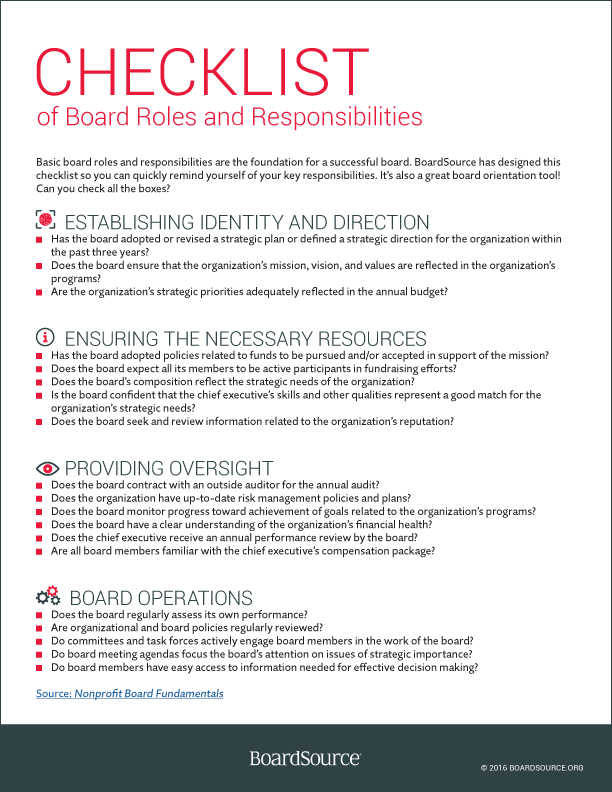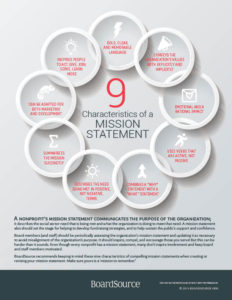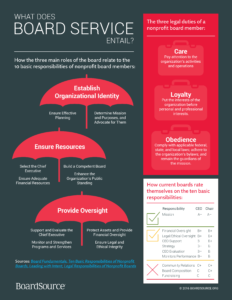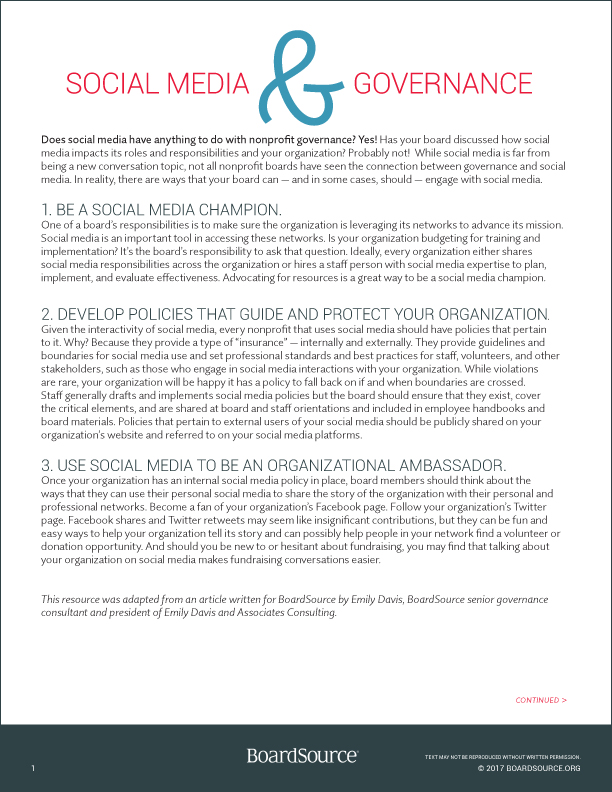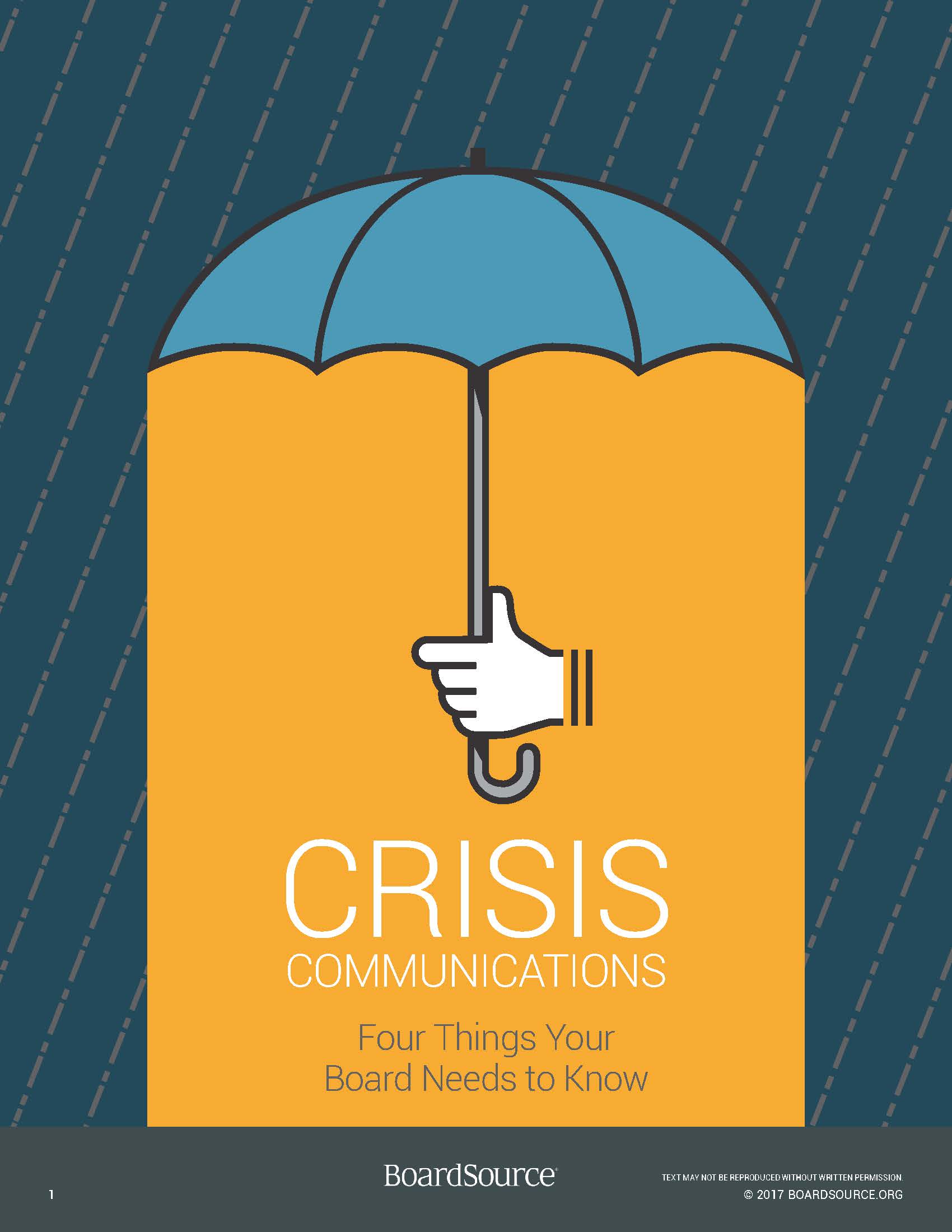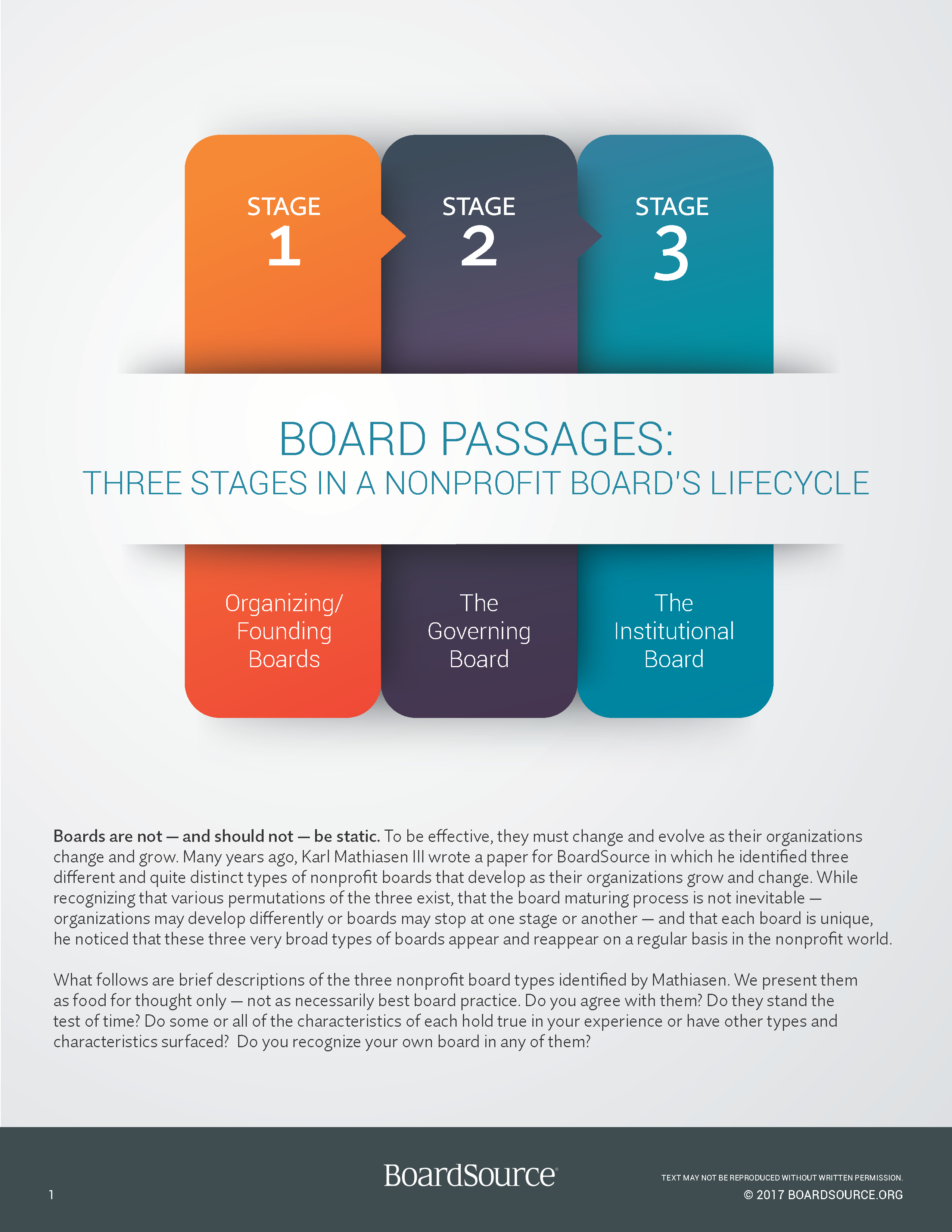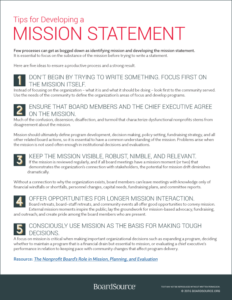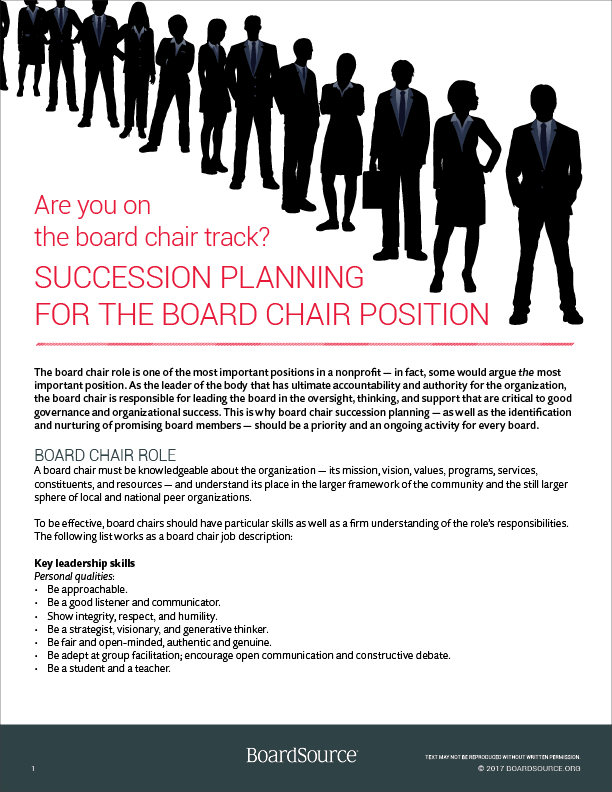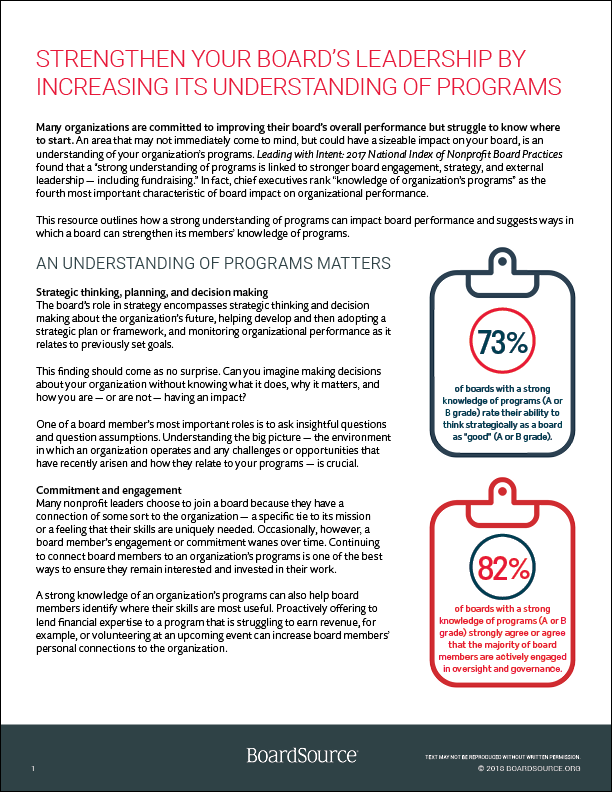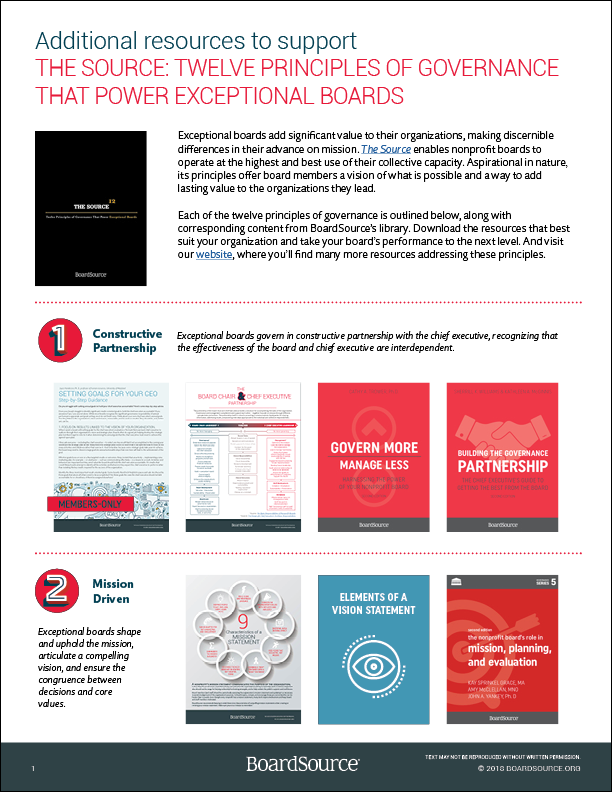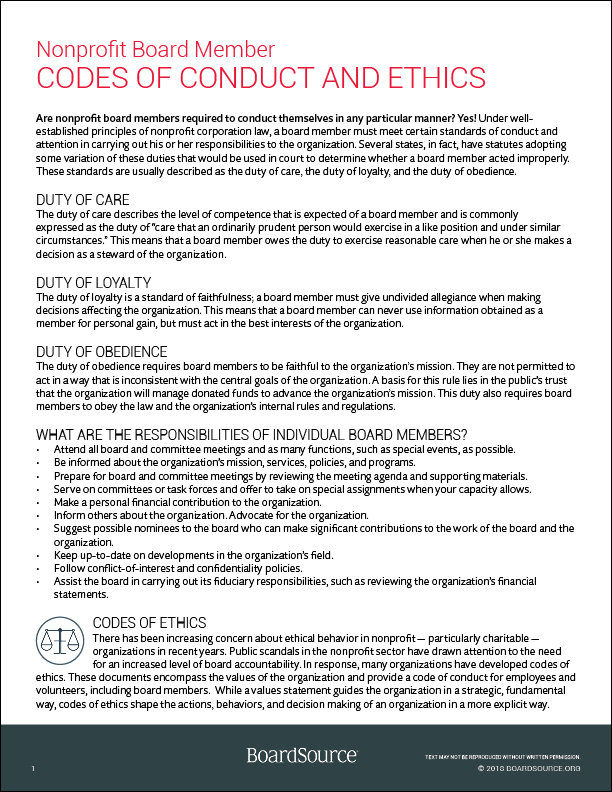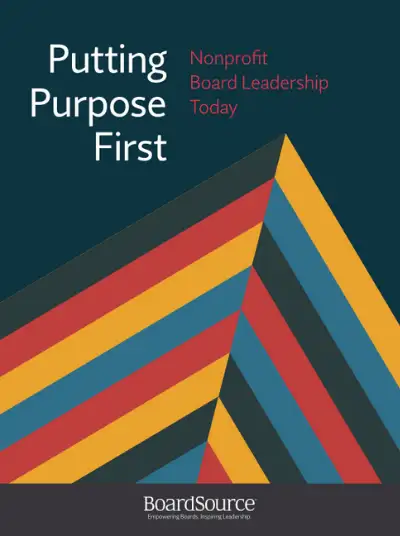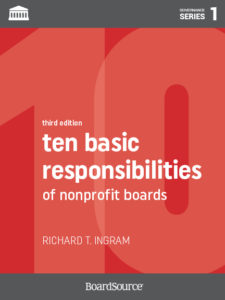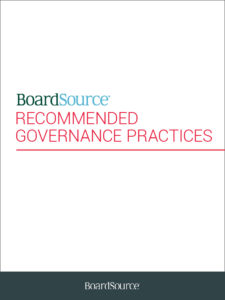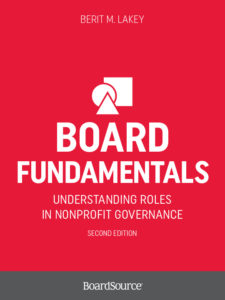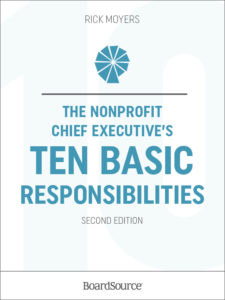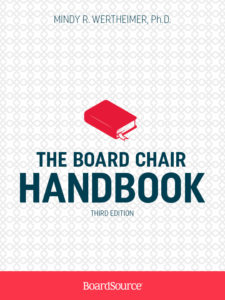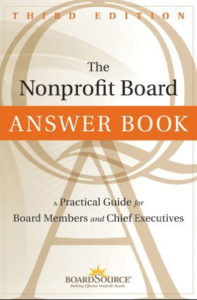Board Member Roles and Responsibilities
Quick Access:
FAQs
Guides, tools, templates, and infographics
Publications: books and toolkits
Written resources: 101, 201, and 301-level
Sign-up to receive our communications; we’re always adding new resources and will send them to you directly.
What is a Board of Directors?
A board of directors is the governing body ultimately responsible for a nonprofit and has specific legal and ethical responsibilities to the organization. Learn more about the importance of a board of directors. Boards are comprised of different positions: board members, who may be called directors, committee chairs, and officers. Filling all roles and distributing responsibilities among board members can ensure proper oversight and advance the organization’s work. By understanding how each board member fits into the picture and enhances the organization, board members can empower each other and better support the organization as a united group.
Understanding how Nonprofit Board Members Fulfill their Roles and Responsibilities
One fundamental challenge that many nonprofit organizations struggle with is understanding how to fulfill board member roles and responsibilities. It’s important to engage individual board members and all board committees to help advance the organization’s mission and collective purpose.
According to Leading with Intent, boards are doing well with the more fundamental board responsibilities — understanding the organization’s purpose and mission and providing financial oversight. Conversely, they struggle with external responsibilities, including fundraising, advocacy, community-building, and outreach. Enhanced awareness of what is, and is not, a part of the board’s essential responsibilities helps boards operate at their fullest potential.
Board of Directors Responsibilities
The Ten Basic Responsibilities of Nonprofit Boards outline the key roles and responsibilities of a nonprofit board, grouped into three main areas: providing oversight, securing resources, and setting strategy. Governance as Leadership built upon those ideas and introduced the fiduciary, strategic, and generative modes of governance through which the board can consider decisions and deliberate options. Purpose-Driven Board Leadership (PDBL) completed the work with a wrap-around framework for exceptional, authorized, and equitable board governance. PDBL addresses how the board conducts its work; constructs, recruits, and engages its members and embraces and serves its community. The application of PDBL better positions and equips governing boards to center and advance equity and justice.
Boards represent the public to govern organizations for the betterment of the communities they serve. Who is on the board can drastically change how the board operates and what role it plays.
Board Officer Positions
To support order and process, most bylaws include the following board officer positions, regardless of board size or type:
Board Chair
Responsible for leading the board, serving as the day-to-day supervisor and partner of the chief executive, and facilitating board meetings.
Vice Chair
Fills in for the chair when necessary and may also be assigned particular work. This position provides expected succession for the chair.
Board Secretary
Responsible for keeping or overseeing the keeping of board meeting minutes and the board’s records.
Board Treasurer
Oversees all matters related to the organization’s finances and budget, and usually serves as the chair of the finance committee.
As in any role, it is important for all boards to ensure that every board member fully understands what’s expected and needed of them, and then for the board to hold each member and itself accountable.
Additional Resources on Board Member Roles and Responsibilities
BoardSource formalized the core roles and responsibilities of board members and boards in the book widely recognized as the definitive word on the role of a nonprofit board, Ten Basic Responsibilities of Nonprofit Boards, and developed a board self-assessment tool to help boards evaluate their performance in each of these areas.
Purchase Putting Purpose First and the Ten Basic Responsibilities of Nonprofit Boards to learn more.
Check out our other guides, tools, and templates below to help ensure your board members know their appropriate roles and responsibilities.
Become a BoardSource Member Today
BoardSource FAQs
BoardSource has been fielding governance-related questions posed by nonprofit leaders for over 30 years. Here are the answers to the most frequently asked questions about board member roles and responsibilities.
Determine mission and purpose.
It is the board’s responsibility to create and review a statement of mission and purpose that articulates the organization’s goals, means, and primary constituents served.
Select the chief executive.
Boards must reach a consensus on the chief executive’s responsibilities and undertake a careful search to find the most qualified individual for the position.
Support and evaluate the chief executive.
The board should ensure that the chief executive has the moral and professional support they need to further the goals of the organization.
Ensure effective planning.
Boards must actively participate in an overall planning process and assist in implementing and monitoring the plan’s goals.
Monitor and strengthen programs and services.
The board’s responsibility is to determine which programs are consistent with the organization’s mission and monitor their effectiveness.
Ensure adequate financial resources.
One of the board’s foremost responsibilities is to secure adequate resources for the organization to fulfill its mission.
Protect assets and provide proper financial oversight.
The board must assist in developing the annual budget and ensuring that proper financial controls are in place.
Build a competent board.
All boards have a responsibility to articulate prerequisites for candidates, orient new members, and periodically and comprehensively evaluate their own performance.
Ensure legal and ethical integrity.
The board is ultimately responsible for adherence to legal standards and ethical norms.
Enhance the organization’s public standing.
The board should clearly articulate the organization’s mission, accomplishments, and goals to the public and garner support from the community through advocacy.
Nonprofit board members have the legal responsibility to meet the duty of care, the duty of loyalty, and the duty of obedience. Under well-established principles of nonprofit corporation law, a board member must meet certain standards of conduct and attention in carrying out their responsibilities to the organization. Several states have statutes adopting some variation of these duties that would be used in court to determine whether a board member acted improperly. These standards are usually described as the duty of care, the duty of loyalty, and the duty of obedience.
- Attend all board and committee meetings and functions, such as special events.
- Be informed about the organization’s mission, services, policies, and programs.
- Review agenda and supporting materials prior to board and committee meetings.
- Serve on committees or task forces and offer to take on special assignments.
- Make a personal financial contribution to the organization.
- Inform others about the organization. Advocate for the organization.
- Suggest possible nominees to the board who can make significant contributions to the work of the board and the organization.
- Keep up-to-date on developments in the organization’s field.
- Follow conflict-of-interest and confidentiality policies.
- Refrain from making special requests of the staff.
- Assist the board in carrying out its fiduciary responsibilities, such as reviewing the organization’s financial statements.
- Oversee board and executive committee meetings.
- Work in partnership with the chief executive to make sure board resolutions are carried out.
- Call special meetings if necessary.
- Appoint all committee chairs and, with the chief executive, recommend who will serve on committees.
- Assist chief executive in preparing board meeting agendas.
- Assist chief executive in conducting new board member orientation.
- Oversee searches for a new chief executive.
- Coordinate chief executive’s annual performance evaluation.
- Work with the governance committee to recruit new board members.
- Act as an alternate spokesperson for the organization.
- Periodically consult with board members on their roles and help them assess their performance.
- Attend all board meetings.
- Serve on the executive committee if one exists.
- Ensure the safety and accuracy of all board records.
- Take board meeting minutes or review minutes if that task is assigned to a staff member.
- Assume responsibilities of the chair in the absence of the board chair, chair-elect, and vice chair.
- Provide notice of meetings of the board and/or of a committee when such notice is required.
- Attend all board meetings.
- Understand financial accounting for nonprofit organizations.
- Serve as the chair of the finance committee.
- Manage, with the finance committee, the board’s review of and action related to the board’s financial responsibilities.
- Work with the chief executive and the chief financial officer to ensure that appropriate financial reports are made available to the board on a timely basis.
- Present the annual budget to the board for approval.
- Review the annual audit and answer board members’ questions about the audit (if there is no audit committee)
- Attend all board meetings.
- Serve on the executive committee if one exists.
- Carry out special assignments as requested by the board chair.
- Understand the responsibilities of the board chair and be able to perform these duties in the chair’s absence.
- Participate as a vital part of the board leadership.
Legally and in practice, all of these definitions describe the same governing body of a nonprofit. The term “trustee” originally referred to the person who has the fiduciary duty for a charitable trust or a foundation. By tradition, higher education institutions also tend to refer to their board members as trustees.
New board members can be selected by current board members; by members, chapters, or affiliates; or by other related groups such as religious bodies or government agencies. By far, the most common method among public charities is election by peers. Board members can re-elect their colleagues and/or others to the board position. This type of a board is called self-perpetuating. A board that elects its own members has the advantage of determining its needs based on the profile of the present board. It can focus on group dynamics, missing skills, or the need for diversity when searching for new board members. This process clearly is labor-intensive for the current board, but it provides an opportunity to bring together a group of committed people who have had a chance to define their mutual goals.
Effective board recruitment follows the principles of matching available resources with existing needs. How does a board know what it needs? It must first clarify what it already has. It relies on a strategic board composition matrix — a recruitment tool that allows it to map out the composition of the present board. This map reveals the missing ingredients and allows the board to focus its search in the right direction.
A board composition matrix forces the board to articulate the kinds of qualities, characteristics, skills, expertise, backgrounds, and various perspectives that make a good board. After becoming sensitive to these attributes and verifying which of them are already there, the board’s governance committee is one step closer to meeting the needs of the board.
Sending applications indiscriminately is a haphazard way to find good board members. Boards shouldn’t get too excited about a candidate who responds positively to a recruitment letter as the first communication. Serious cultivation and information sharing is necessary before inviting a person to serve on your board. An application form, however, can help gather information on the interests, background, and skills of a prospective board member with whom the governance committee has already communicated and established mutual interest.
If an interested person contacts the organization and asks for an application form to join the board, this is an excellent moment to start serious communication. Willing bodies do not always make good board members, but genuine interest should not be ignored. Ultimately, if the candidate and the board find themselves on the same wavelength, it is time to extend an application form with a welcome letter.
Information forms used to gather data on your present and potential board members allow you to concentrate your cultivation activities in the right direction. This information also allows you to direct your board members to activities that interest them and serve the board’s needs in the best possible manner. Your form could collect information on the following topics:
- Name, address, contact information
- Special skills or expertise: fundraising, HR, finances, business, PR, technology, legal, industry or mission-specific, advocacy, etc.
- Professional background
- Level of education
- Other professional affiliations
- Other board services
- The expected level of gift or possible in-kind donations
- Special interests or hobbies
The objective of board recruitment is to find willing, able, and committed board members. How do you know if a candidate is going to be the right person for your board? You can never be 100 percent sure, but if you ask direct questions you can get pretty close. Here are some examples of questions to ask:
- Why are you interested in our organization?
- Why are you interested in serving on a board?
- Do you have any previous board service, leadership, or volunteer experience? Are you presently serving on any boards?
- What kinds of skills or expertise can you offer? How will the organization benefit from your participation? How do you think we could best take advantage of your expertise?
- What do you expect us to do for you so that your experience is satisfying?
- What kind of time and financial commitment will you be able to make? Are you willing to serve on committees and task forces? Can we expect you to come to board meetings regularly? Would you be able to make a personal contribution?
Most individuals who already serve on a nonprofit board need no outside justification for being a board member; they know what they are doing and why they want to continue doing it. However, there are others who are too shy to join a board or who need someone else to tell them why it makes sense.
Here are some reasons why people join nonprofit boards:
- They know their skills are needed.
- A nonprofit is going to improve and will benefit from their contributions.
- There is a possibility to effect change in an organization.
- They will feel good by doing good.
- They enjoy collaborating with interesting people who have the same interests and values.
- They want to learn new skills.
As for what you should know, serving as a board member is one of the most challenging and rewarding of volunteer assignments. While appointment or election to a board is an honor, board members have important legal and fiduciary responsibilities that require a commitment of time, skill, and resources. Prospective board members do themselves a service and show that they are serious about the commitments they make by asking some basic questions before joining an organization’s board. You can find the answers from the board member who issues the invitation to join; the chief executive of the organization; the board chairperson; other board members, current and former; or written materials.
Good governance depends on enlightened decision-making. Board members in turn need to be knowledgeable about the organization’s status and need if they are to make sound decisions that advance its mission. But boards often say that the information they receive hinders rather than facilitates good governance and strong leadership. They protest that they are overwhelmed with large quantities of irrelevant information, that they don’t get enough information, or that they receive material too late to devote serious attention to it. An effective board information system should focus on decision-making, stimulate participation, and support an appropriate balance of responsibility between board and staff.
Types of board information
Management consultant John Carver describes three types of board information:
- Decision information is used to make decisions, such as establishing selection criteria for the chief executive. It looks to the future and is not designed to measure performance.
- Monitoring information enables the board to assess whether its policy directions are being met. It looks to the past and provides a specific survey of performance against criteria. An example is an annual review of an organization’s strategic plan.
- Incidental information is for the general information of the board and is not related to board action. Committee reports are frequently in this category.
Too often, board information is primarily incidental information. Although such material is useful for maintaining an overall impression of the administration of the organization, it is not usually specific or substantive enough to help board members make decisions or monitor the organization’s success in carrying out its mission.
Establishing a board information system
Establishing and maintaining a board information system is the joint responsibility of the board chair, board members, the chief executive, and staff members who work with the board. The board should discuss
- What information it needs to do its job
- How often it wants this information
- In what form it needs the information
Given this board feedback, the staff can establish the content, format, and frequency of information it will provide the board.
Characteristics of good board information
Barry S. Bader, a consultant and author specializing in hospital governance, identifies seven guidelines for developing effective board information:
- Concise: Is the information communicated as quickly or as briefly as possible?
- Meaningful: Is the information presented in relationship to a significant factor, such as a goal set by the board, past performance, or comparative data?
- Timely: Is the information relevant to the current agenda?
- Relevant to responsibilities: Does the information help the board or board committee discharge its responsibilities?
- Best available: Is the information the best available indicator of the situation or condition being described? Can better information be provided?
- Context: Is it clear why this information is important?
- Graphic presentation: Could the information be presented better graphically than in words?
Basic ingredients of a board information system
Every board must decide for itself exactly what information it needs. For most organizations, however, the following checklist is a starting point.
At least two weeks before each board meeting:
- Agenda
- Information about issues for discussion, when appropriate
- Financial information
- Committee reports
At least two weeks before the board meeting at which it is discussed:
- Annual budget
- Audit report
- Strategic plan
After each board meeting:
- Minutes
- A reminder of next meeting
Monthly:
- Financial report
- Significant published articles about the organization
Quarterly:
- Financial report
Regularly, when appropriate:
- Memo from chief executive summarizing current activities, accomplishments, and need
- Updated material for board handbook
- Advance copies of publications, brochures, or promotional material
- Annual report
Every board has a fundamental responsibility for self-management — for creating a structure, policies, and procedures that support good governance. The term “board organization” encompasses a variety of tasks, from routine matters, such as preparing a schedule of board meetings, to actions with broader consequences, such as developing a policy about terms of service. Below are some of the most frequent questions board members ask about board organization:
How can we contribute to effective board organization?
To set the stage for efficient board and committee work,
- Prepare a written job description for individual board members
- Develop an annual schedule of meetings, determined a year in advance
- Circulate clear and thorough information materials, including an agenda, to all members two to three weeks before each meeting
- Maintain complete and accurate minutes of all meetings
- Keep meetings brief and focused; stimulate the broadest possible participation by members
- Ask each board member to serve on at least one board committee or task force. (For new members, one committee assignment is sufficient.)
- Acknowledge members’ accomplishments and contributions in a variety of ways in the organization’s newsletter, at meetings, in minutes
To encourage smooth functioning committees, follow these additional steps:
- Prepare written statements of committee and task force responsibilities, guidelines and goals. These organizational documents should be reviewed every one to two years and revised if necessary.
- Make work assignments according to the background, expertise, and schedule of each member.
- Distribute tasks among members so that everyone participates but no one is overloaded.
- Create a system of checks and balances to monitor committee members’ work and assure that tasks are completed on schedule.
- Assign an appropriate staff member to work with each committee.
Guides, Tools, Templates, and Infographics
Social Media & Governance
Members-only
Setting Goals for Your CEO: Step-by-Step Guidance
Members-only
Succession Planning for the Board Chair Position
Members-only
